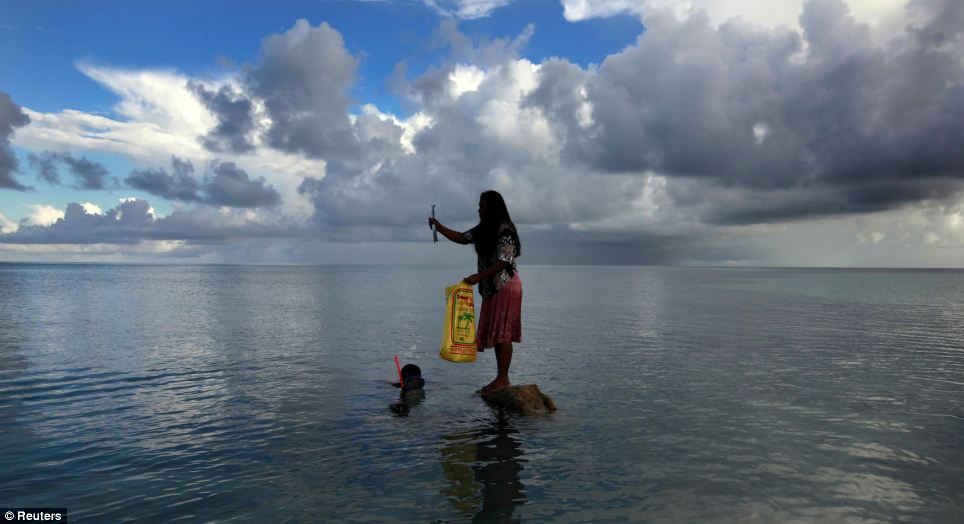Some (sort of) good news on sea level rise
Reef growth may be able to keep pace with climate change, keeping island nations above water

That sea level rise driven by global warming will soon make low-lying island nations uninhabitable has been widely publicized and readily accepted. In 2009, then-President Mohamed Nasheed of the Maldives held a cabinet meeting underwater in full scuba gear to raise global awareness of the threat of climate change. (The underwater meeting later became the core of a documentary film, The Island President, released just as Nasheed was deposed.) That same year, the U.N. High Commissioner for Refugees reported that
The entire populations of low-lying States such as the Maldives, Tuvalu, Kiribati and the Marshall
Islands may in future be obliged to leave their own country as a result of climate change
and that those states might even cease to exist as their lands were swamped. This year, densely populated Kiribati acquired about 5600 acres on Fiji as a potential refuge from rising seas.
Certainly these fears are understandable. The IPCC currently projects that seas will rise up to 1 meter this century. The average elevation of Tuvalu is roughly 2 meters above current sea level; the Maldives sit even lower. As the picture above shows, some parts of both nations have disappeared under the sea in recent decades.
This looks like a classic case of environmental injustice — the small island nations are responsible for less than 1% of global emissions, so there is no way they can make a dent in sea level rise on their own. And they are very poor, so they can’t afford the kind of infrastructure that might in theory someday protect, say, New York City against the worst impacts of a rising sea.
But the story is apparently not quite as simple as it appears. Science magazine reported last month (subscription required) that many scientists think the ocean won’t necessarily close over small island nations. Turns out that, under ideal conditions, the coral reefs that support these islands
can grow 10 to 15 millimeters a year — faster than the sea-level rise expected to occur later this century.
That’s the good news. The bad news is that conditions are by no means ideal, as powerfully illustrated by newly submerged land, flooding, and salt water intrusion. Everyone agrees that populations on many parts of these low lying islands are indeed vulnerable to erosion and storm surges.
But even so there may be some good news. If the problems, serious and real as they are, don’t result from global warming, then local measures might actually have some tangible effect against them. And indeed, that’s one conclusion of the Science piece: coastal erosion, say both academic scientists interviewed for the story and some Kiribati officials, is largely attributable to local human activities such as poor shoreline management and development of marginal lands. Those, of course, are not easy or costless to prevent, but with some help from wealthier nations they may be considerably more tractable than global greenhouse emissions.







Reader Comments